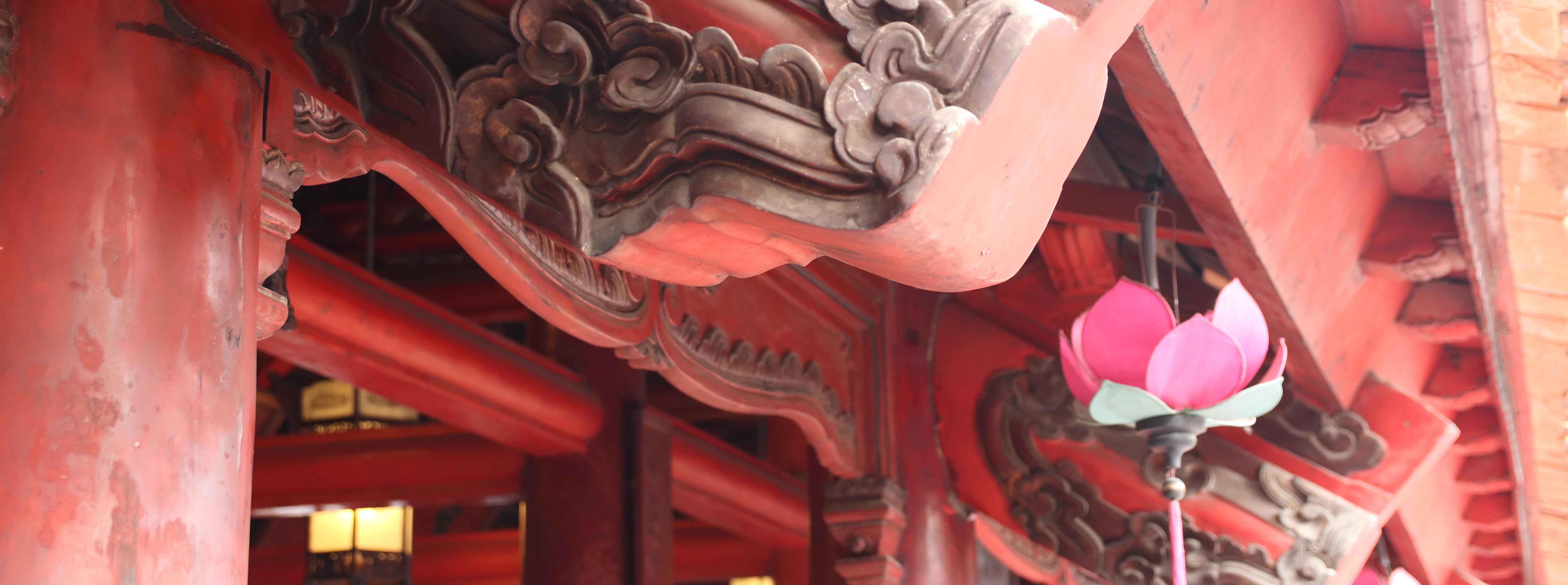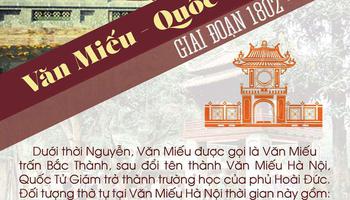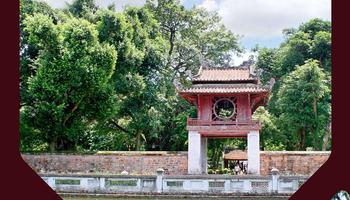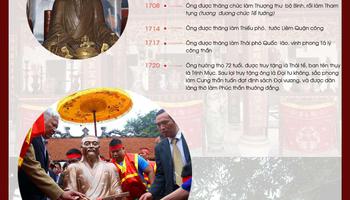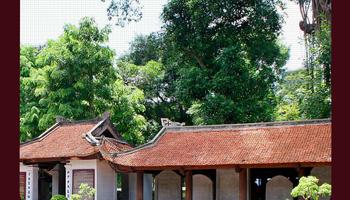KING LÝ THÁNH TÔNG THROUGH THE EXHIBITION " PROLEGOMENON TO THE TRADITION OF EDUCATION IN VIETNAM "
King Lý Thánh Tông (1023-1072) was the third king of the Lý dynasty, devoted to Buddhism, respecting Confucianism, possessing profound knowledge, valuing cultural development, and esteeming the national spirit. The king was the one who ordered to build Văn Miếu (Temple of Literature) in 1070 – marking the origin of education in Vietnam.
Through artifacts, historical documents, the exhibition " Prolegomenon To The Tradition Of Education In Vietnam "at the Thái Học House recounts the lives and careers of the three kings and teacher Chu Văn An, including King Lý Thánh Tông - the benevolent king of Vietnam.
The exhibition section about King Lý Thánh Tông narrates his contributions to the country and its people from the moment he ascended the throne, such as issuing numerous laws, establishing state machinery organizations, implementing people-centric policies, and promoting the harmony of the three teachings... King Lý Thánh Tông deeply revered Buddhism, rich in compassion and virtue. During his reign, he built many famous pagodas and towers, including the twelve-story Báo Thiên tower constructed in 1057, considered one of the Four Great Architectures of Annam, symbolizing the spiritual strength of Đai Việt.
King Lý Thánh Tông also founded the Thảo Đường Buddhist sect, advocating for the development of national consciousness, desiring independence, self-reliance, and resisting cultural invasion from the Northern Song invaders.
In the area dedicated to King Lý Thánh Tông, there is an illustration depicting the scene of him warming himself by the fire, still concerned for the suffering people outside the palace. The painting by artist Nguyễn Thanh Phong was inspired by the story of the king's compassion for the people as recorded in the "Complete Annals of Đai Việt."
The Complete Annals of Đai Việt records: "In the winter, in the 10th month, during the severe cold, the king told the officials: 'While I am inside the palace, warming my bones by the fire and still feeling cold wearing fur coats like this, I think of the prisoners confined in dungeons, suffering in chains, uncertain of their fate, not having enough to eat, poorly clothed, suffering from the cold wind, or some might die unjustly. I feel great pity for them. Therefore, order the provision of blankets and mats, and provide two meals a day." The king loved his people as his own children, implementing many measures to show his compassion, including reducing taxes and penalties, granting freedom to palace maids, and caring for the livelihoods of the people, especially agricultural production to avoid prolonged famine.
Lý Thánh Tông was not only a benevolent king but also skilled in utilizing people and military strategies. Being intelligent and strategic, the king consolidated territorial unity, stabilizing the southern borders of Đại Việt (in the war against King Chiêm Thành in 1069). This event is recorded in historical texts: "King Chiêm Thành was captured and offered three districts of Địa Lý, Ma Linh, and Bố Chính as ransom (these were territories of present-day Quảng Bình and Quảng Trị provinces)."
Lý Thánh Tông left a mark in the history of Confucian education in Vietnam with the event of constructing Văn Miếu in 1070: "Establishing Văn Miếu, casting statues of Confucius, Chu Cong, and the Four Accomplished, painting statues of the Seventy-two Sages, conducting seasonal rituals. The crown prince came to study here." The king made education the fundamental basis for building the nation on the foundation of Confucianism combined with Buddhist teachings. Thanks to the king's openness, Đại Việt witnessed the emergence of a benevolent intellectual class, harmonious in both religion and politics.
With modern design, artistic creativity, scientific arrangement, harmonious colors evoking emotions, along with concise and rich content, the exhibition on King Lý Thánh Tông in the Exhibition has faithfully portrayed the portrait of a virtuous king of the Vietnamese people. The exhibition has attracted the attention of visitors, helping them understand more about the great role of King Lý Thánh Tông in the country's history, the people, Đại Việt's education, and culture in general, and specifically, with Văn Miếu – Quốc Tử Giám.

AV
TL: LH
